By: Katie Geddes, ORTA
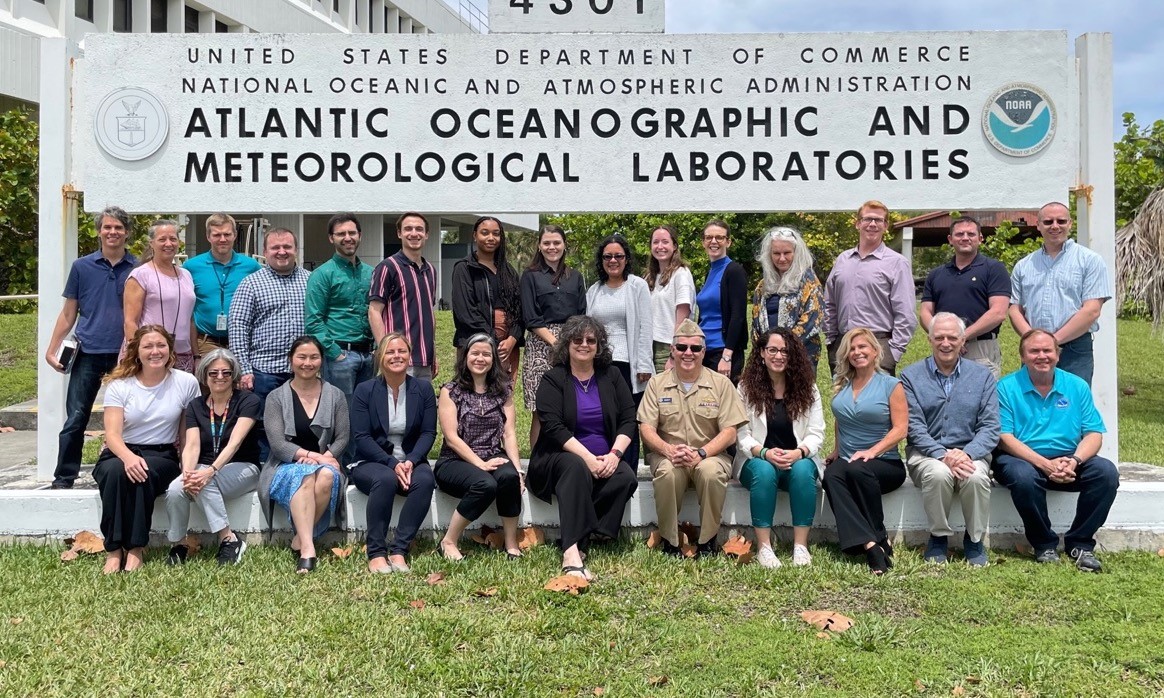
Above: Attendees in the ORTA-AOML Research Transitions Meeting. From left to right (starting in the back row): Gregory Foltz, Kathryn Sellwood, Jason Sippel, Wayne Mackenzie, Gary Dreyzin, Andrew Peck, Briana Yancy, Katie Geddes, Shirley Murillo, Mary Solokas, Abby Arnold, Fiona Horsfall, John Walker, Kevin White, Bryan Cole, Nicole Miller, Kelly Goodwin, Lisa Nakamura, Megan Deehan, Renellys Perez, Molly Baringer, CAPT Bill Mowitt, Isha Renta, Annette Hollingshead, Gustavo Goni, and Kenneth Vierra.
The NOAA Office of Research, Transition, and Application (ORTA), including the Uncrewed Systems Research Transition Office (UxSRTO) and the Technology Partnerships Office (TPO), visited NOAA facilities in Miami, as well as the University of Miami Cooperative Institute for Marine and Atmospheric Studies (CIMAS) and Florida International University (FIU), from April 18-20, 2023. The goal of the visit was to brief the Southeast Fisheries Science Center (SEFSC), the Atlantic Oceanographic and Meteorological Laboratory (AOML), the National Hurricane Center (NHC), and other partners on the ORTA mission, focusing on ORTA’s role in accelerating and facilitating the transition of research and development (R&D) within NOAA to operations, applications, commercialization, and other uses. Additional participants from NOAA Headquarters included the OAR Office of Science Support (OSS), the Office and Marine and Aviation Operations (OMAO) Uncrewed Systems Operations Center, and NOAA General Counsel. Over three days, ORTA was able to engage with multiple partners to encourage communication and advance innovations that will support NOAA’s mission.

On Tuesday, April 18, ORTA visited the Southeast Fisheries Science Center (SEFSC) to brief staff working across the Gulf of Mexico, South Atlantic, and Caribbean on research transitions. Erica Rule, Chief of Staff for Science Planning and Operations, provided an SEFSC overview, describing the center’s recently re-organized structure to better meet its mission of providing the scientific advice and data needed to effectively manage the living marine resources of the Southeast region and Atlantic high seas. Fiona Horsfall, ORTA Director, reciprocated with an ORTA 101 presentation; Bryan Cole, UxSRTO Director, detailed NOAA’s uncrewed systems activities; and Wayne Mackenzie, Technology Transfer Program Manager, provided a talk about the Technology Partnerships Office, including the Small Business Innovation Research (SBIR) program. SEFSC scientists discussed ways they have leveraged the SBIR program to advance Artificial Intelligence and Machine Learning applications for fisheries independent survey data analysis, and expanded training and use of uncrewed systems to advance marine mammal and sea turtle monitoring. Following the presentations, ORTA provided customized guidance about the transition plan process in an in-depth question and answer session over lunch that provided an excellent networking opportunity. ORTA looked forward to expanding cooperation with the NOAA Fisheries Science Centers to advance research transitions for myriad fisheries applications.
Following the visit to SEFSC, the ORTA visitors toured the University of Miami Rosenstiel School of Marine, Atmospheric, and Earth Science. ORTA had the privilege of visiting several laboratories in the Marine Technology and Life Sciences Seawater Complex, including the Alfred C. Glassell Jr. SUSTAIN Laboratory (SUrge-STructure-Atmosphere INteraction), the National Resource for Aplysia Facility, and the AOML/CIMAS Experimental Reef Lab. Brian Haus, University of Miami Professor of Ocean Sciences and Director of the SUSTAIN Laboratory, provided a brief talk about the facility as well as a demonstration of the Wind-Wave-Storm Simulator that can simulate category 5 hurricane force winds of up to 155 mph, enabling a variety of experimental designs ranging from studies on rapid hurricane intensification to the development of protective wave barriers.
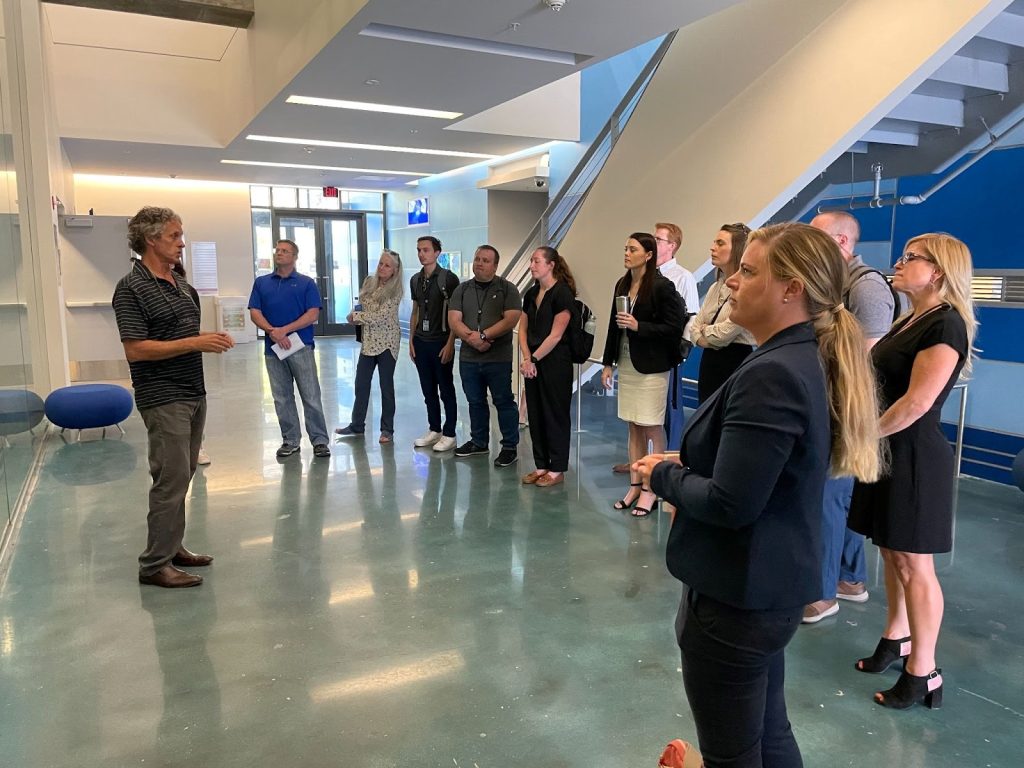
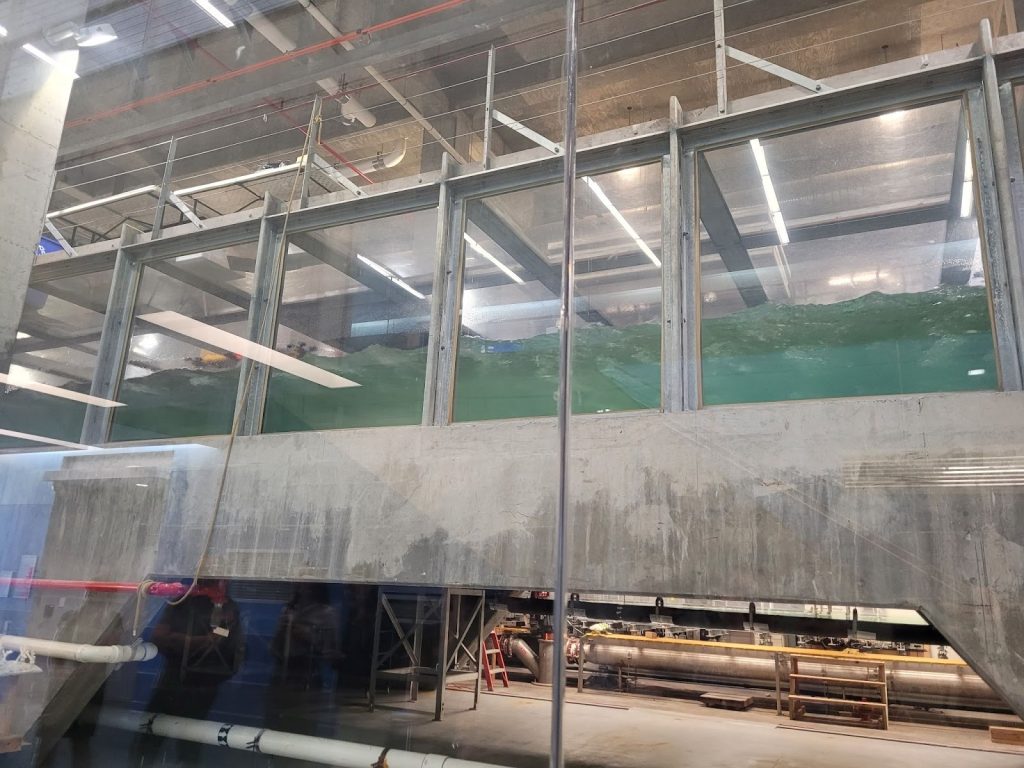
Above: (Left) Professor Brian Haus welcomes ORTA to the The Alfred C. Glassell Jr. SUSTAIN Laboratory. Photo courtesy of Ken Vierra. (Right) The view of the SUSTAIN Wave Tank from the atrium of the Marine Technology and Life Sciences Seawater Complex (MTLSS). Photo courtesy of Isha Renta.
This University of Miami National Resource for Aplysia Facility is the only center in the world that cultures Aplysia throughout their life cycle and raises them for both research and teaching. California sea hare (Aplysia californica) are raised here and used for research on memory and learning, and to model aging within the neural system. Surprisingly, humans and Alpysia share genes that function similarly, a quality that makes Aplysia a suitable model for medical research, particularly for Parkinson’s and Alzheimer’s diseases.
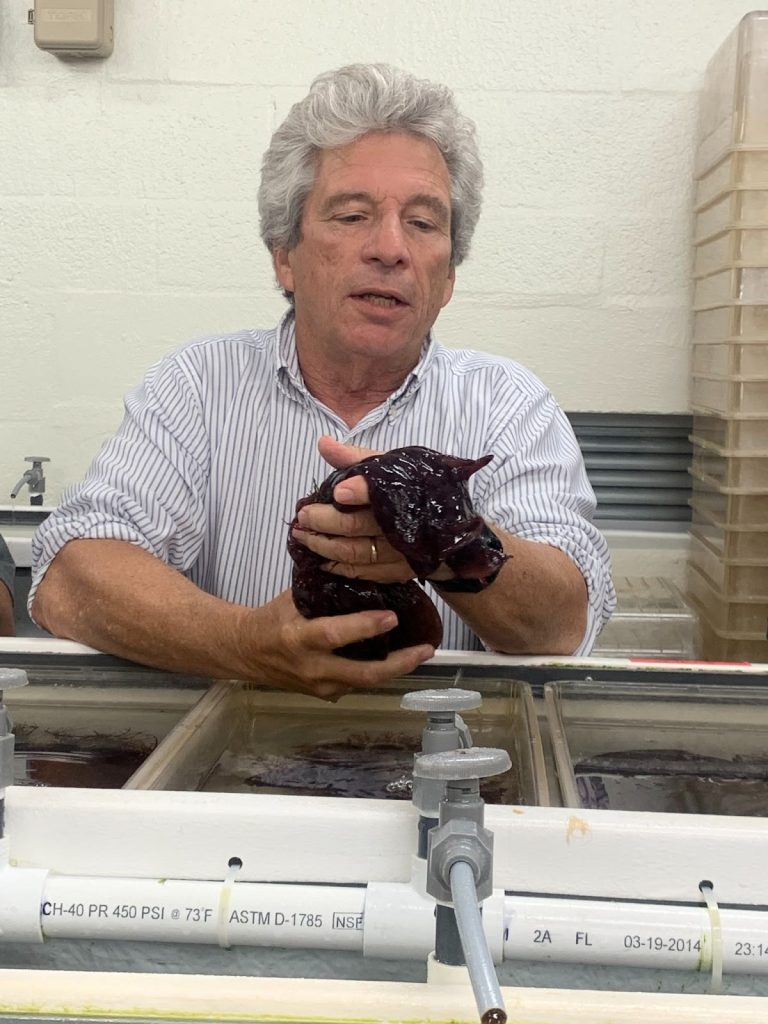
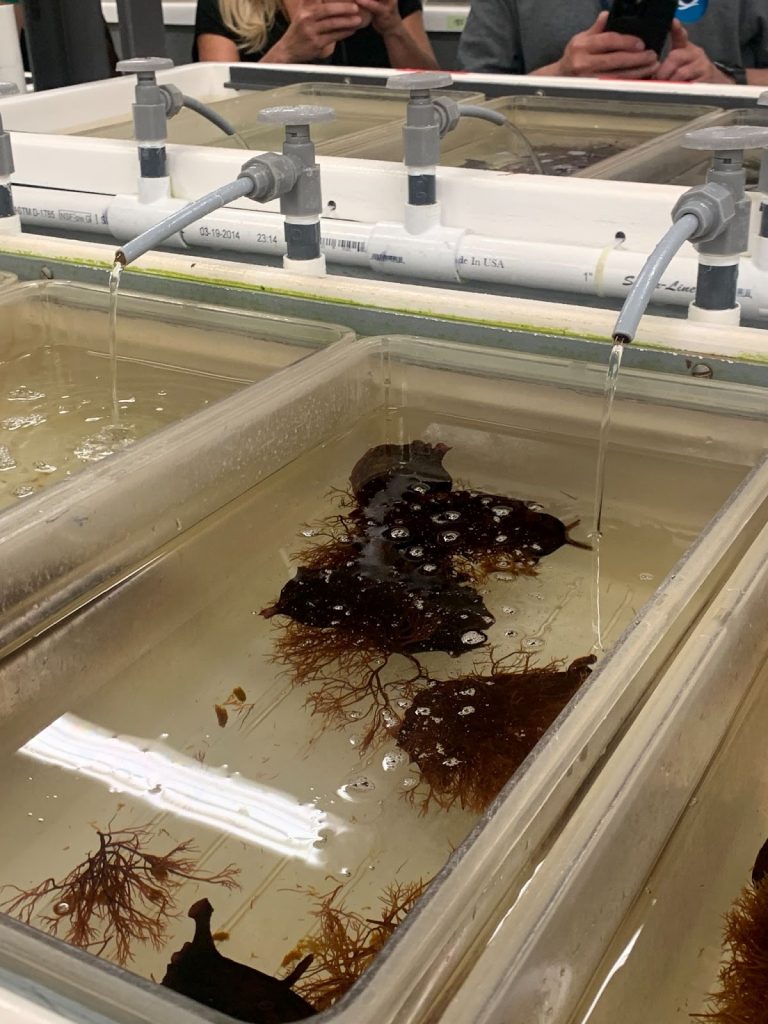
Above: (Left) Professor Michael Schmale displays a Aplysia californica specimen for the ORTA visitors. (Right) A view of Aplysia californica tanks, including the custom water filtration system. Photos courtesy of Katie Geddes.
The Experimental Reef Lab (ERL) at the University of Miami was designed and built by the Atlantic Oceanographic and Meteorological Laboratory (AOML) and the Cooperative Institute for Marine and Atmospheric Science (CIMAS) to create a system through which experiments can be conducted via the manipulation of heat and pH in conditions that mirror those of the ocean. Ian Enochs, Research Ecologist at AOML, and Ana Palacio, Assistant Scientist at CIMAS, discussed the experimental design for current studies on water quality and Stony Coral Tissue Loss Disease (SCTLD) with the ORTA visitors.
Following the tour of the Rosenstiel School, ORTA met with the Cooperative Institute for Marine and Atmospheric Science (CIMAS). Ben Kirtman, Director of CIMAS, and Associate Directors David Die and Emily Becker met with ORTA to discuss how to increase cooperation between ORTA and CIMAS and to learn more about the NOAA research transitions process. This meeting focused on how ORTA accelerates R&D through transition plans, data management, and technology transfer. ORTA and CIMAS discovered a joint and emerging interest in uncrewed systems, and ORTA intended to follow up with the University of Miami Aircraft Center for Earth Studies (ACES) to discuss future engagements and collaborations.

On Wednesday, April 19, ORTA visited the Atlantic Oceanographic and Meteorological Laboratory (AOML), providing an opportunity for AOML staff to meet with ORTA and its subordinate offices and learn how ORTA can further support research transitions, uncrewed systems, technology transfer, and protection of intellectual property, as well as to learn about NOAA’s SBIR program. ORTA staff were also delighted to have the opportunity to learn about the breadth of innovative work conducted at AOML. Molly Baringer, AOML Deputy Director, welcomed ORTA to the facility and provided an overview of AOML’s mission and vision, Fiscal Year 2022 (FY22) accomplishments, current diversity and inclusion initiatives, and current challenges. AOML researchers from across the Physical Oceanography, Hurricane Research, and Ocean Chemistry Divisions provided talks on uses of uncrewed systems for myriad applications such as autonomous ‘omics, ocean observing, storm forecasting, and tropical cyclone intensification, as well as the use of dropwindsondes to validate uncrewed systems.
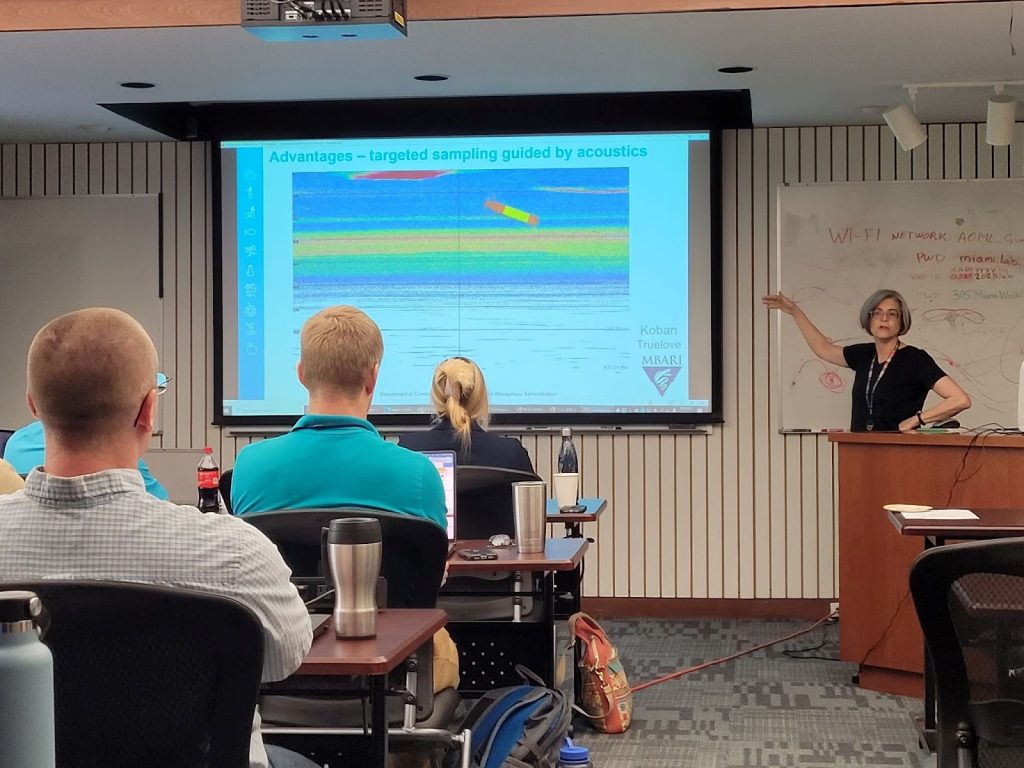
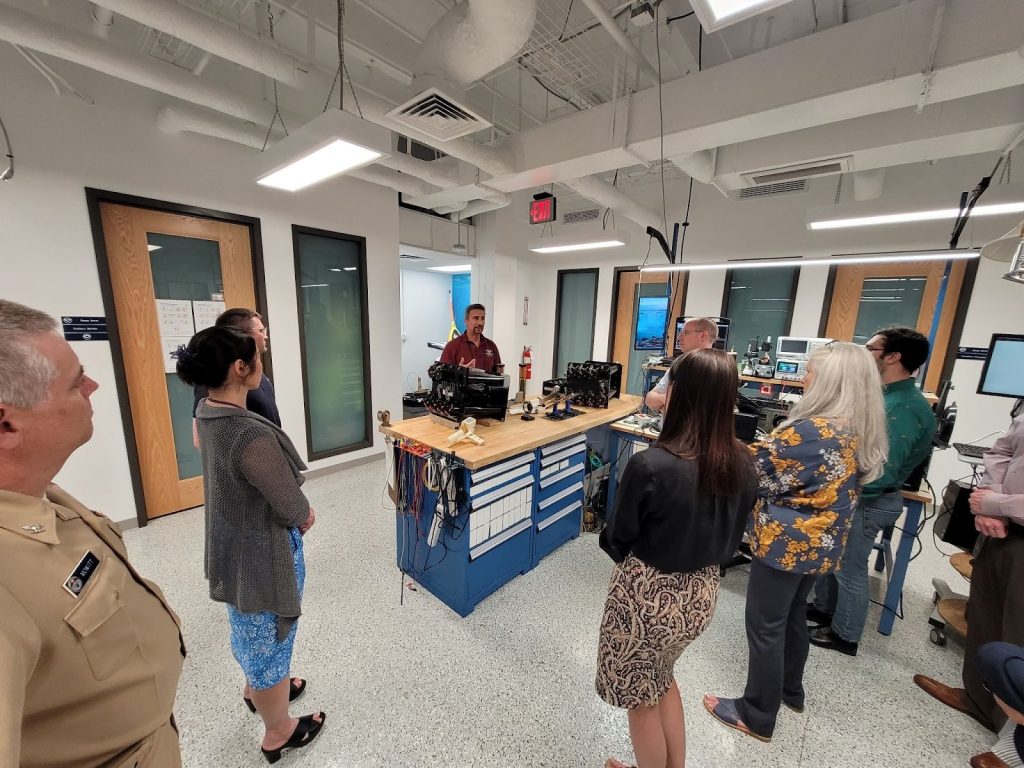
Above: (Left) Kelly Goodwin provides a talk on NOAA’s autonomous ‘omics capabilities. Photo courtesy of Isha Renta. (Right) Ulises Rivero, Chief Engineer in in the Instrumentation Group of the AOML Physical Oceanography Division, discusses how expendable bathythermographs (XBTs) collect data. Photo courtesy of Isha Renta.
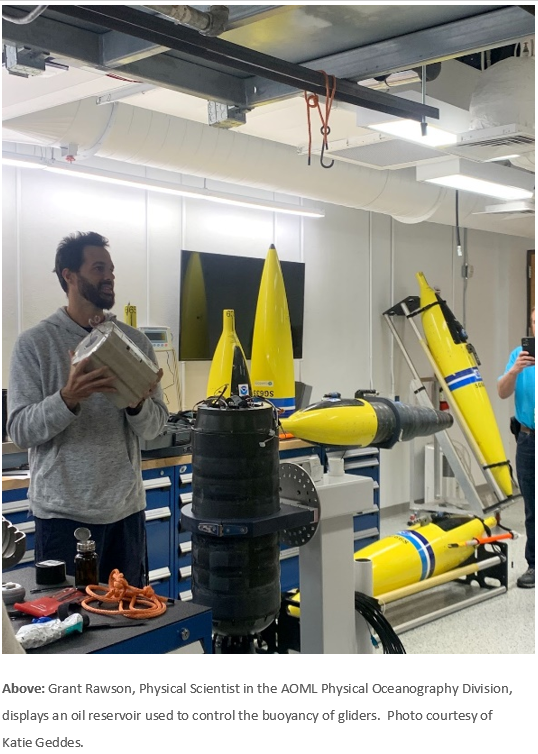
A Lunch-N-Learn provided an opportunity for Fiona Horsfall, Bryan Cole, and Wayne Mackenzie to discuss ORTA products, services, programs, and funding opportunities available to NOAA laboratories. Afternoon talks focused on the application and evaluation of data derived from uncrewed systems for use within the Hurricane Research Division. The AOML visit concluded with a tour of the laboratories. Chris Kelble, Ocean Chemistry and Ecosystems Division Director, provided a tour of the Advanced Manufacturing Lab and the ‘omics environmental DNA (eDNA) lab. Renellys Perez, Deputy Director of the Physical Oceanography Division, took the ORTA visitors into the engineering space where scientists develop new technologies, refurbish existing platforms, and prepare to deploy instruments on research cruises. The visit concluded with a talk from Shirley Murillo, Acting Director of the Hurricane Research Division, on the team’s current work focused on tropical cyclone intensity and track, forecast improvements, and emerging research areas and partnerships.
The ORTA visit to Miami concluded on Thursday, April 20 with a tour of the National Hurricane Center (NHC) and meetings with Florida International University (FIU). ORTA met with the Storm Surge and Hurricane Specialist Unit, the Tropical Analysis and Forecast Branch (TAFB), the Hurricane and Ocean Testbed (HOT), and the Chief, Aerial Reconnaissance Coordination, All Hurricanes (CARCAH) Unit. The NHC meetings kicked off with a tour of the operational floor and a discussion with Richard Pasch, Senior Hurricane Specialist, about emerging technologies and the value of post-storm best track assessments. Following the tour, ORTA met with Cody Fritz and Laura Alaka, Storm Surge Specialists, as well as Lisa Bucci, Hurricane Specialist, to discuss critical observation data gaps and pre-storm preparations such as staging saildrones in key locations. Christopher Landsea, TAFB Branch Chief, provided a presentation on TAFB’s areas of responsibility; data needs including surface winds (1m to 100m), waves, and pressure; and information exchange between TAFB and mariners. Notably, ORTA learned that UxS can serve as a validation tool for other forms of observations, and vice versa. Wallace Hogsett, Science & Operations Officer and Technology and Science Branch Chief, discussed the role of HOT in testing and validating emerging technologies and R&D before deployment in an operational capacity. Finally, ORTA met with Warren Madden, Chief Reconnaissance Coordinator for CARCAH. Warren and UxSRTO identified a potential collaboration to explore the use of uncrewed systems for aerial reconnaissance for both hurricanes and atmospheric river events. UxSRTO also expressed interest in attending the annual hurricane hotwash and the NOAA Hurricane Conference.
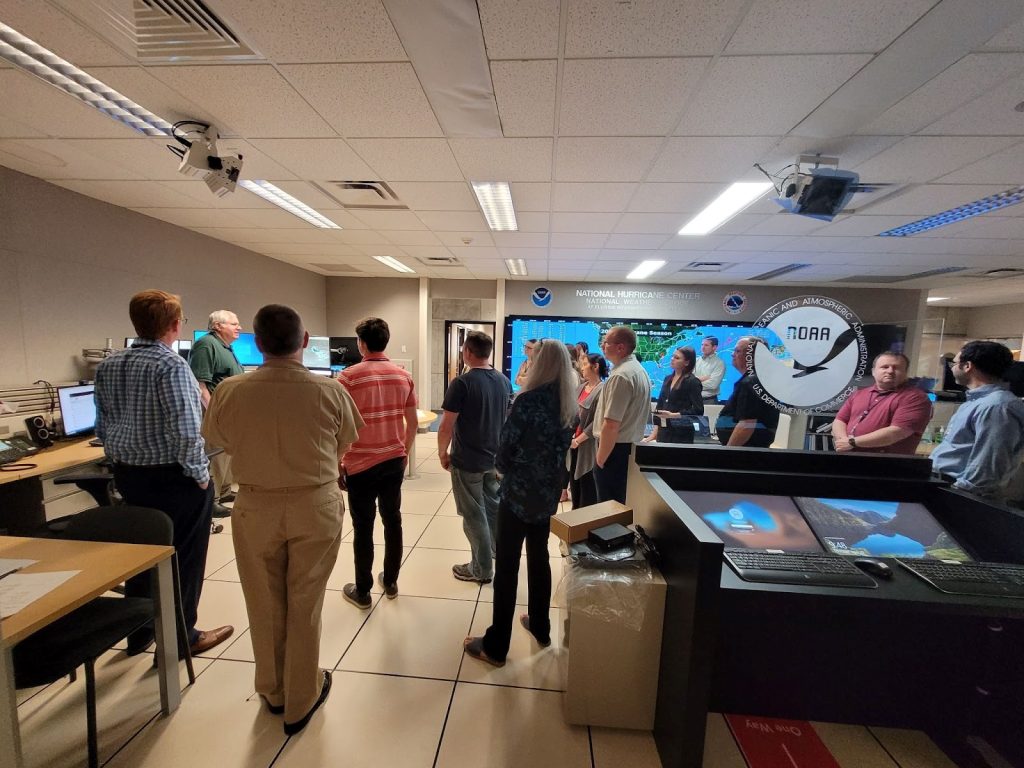
Above: ORTA tours the National Hurricane Center and meets with Richard Pasch, Senior Hurricane Specialist. Photo courtesy of Isha Renta.
ORTA visited Florida International University (FIU) to meet with the Office of Research and Economic Development. Peter Hernandez, Director of the Office of Technology Management and Commercialization, and Roberto Gutierrez, FIU Assistant Vice President for Research, discussed the value of technology transfer within FIU, noting FIU’s strengths in the physical sciences, computer sciences, and engineering. ORTA was keen to learn more about FIU’s recently patented fire-weather tool, a new drone that hovers above wildfires and allows communication among first responders.
ORTA leveraged three days in Miami to the fullest extent by meeting with myriad NOAA personnel and other partners and affiliates to provide more information on research transitions, uncrewed systems, technology transfer and SBIR. ORTA gathered key insights from each NOAA facility in Miami and identified synergies with external academic partners, paving the way for expanding relationships, fostering a culture of research transitions planning, and encouraging innovation and collaboration that promises benefits across NOAA’s mission areas.
